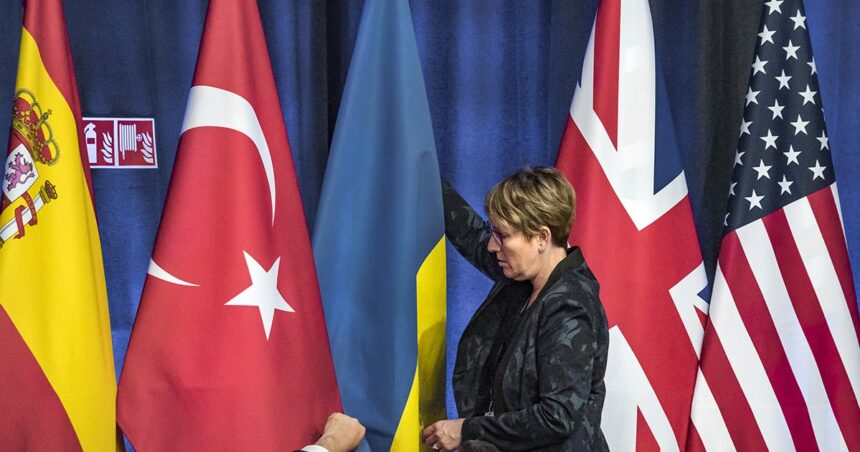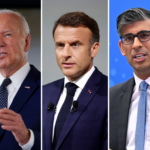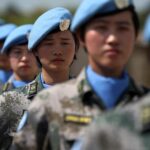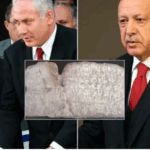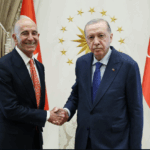Summary by Geopolist | Istanbul Center for Geopolitics:
The article from the Council on Foreign Relations discusses the upcoming NATO summit and its significance for three key audiences: Ukraine, U.S. Congressional Republicans, and Russian President Vladimir Putin. The summit aims to reinforce NATO’s unity and strategic goals, addressing Ukraine’s security concerns without offering full membership, emphasizing increased European defense spending, and preparing high-readiness forces to counter Russian threats. The Biden administration seeks to showcase NATO’s strength and cohesion amidst these geopolitical challenges.
For more details, read the full article here below.
The Joe Biden administration and its partners in the North Atlantic Treaty Organization (NATO)—for both domestic and foreign policy reasons—are clearly determined to ensure that their July 9–11 summit in Washington is seen as a resounding success. Preparations for the meeting, which marks the alliance’s seventy-fifth anniversary, have focused on three audiences in a position to undermine the event: Ukraine’s leaders, who expressed very public unhappiness when their country was denied an invitation to join NATO at last year’s summit; second, Congressional Republicans, who (echoing Donald Trump) have criticized European defense spending as too low and forced a monthslong suspension of aid to Ukraine; and third, Russian President Vladimir Putin, whose forces regained the military initiative this year after Ukraine’s 2023 counteroffensive failed.
The summit will not give Kyiv the one thing (NATO membership) that would prevent the country’s leaders from repeating last year’s complaints. Instead, U.S. officials hope to make their alternative—what they call a “bridge” to membership—as attractive and meaningful as possible. Their three-part package to achieve this result includes:
Sharpened diplomatic rhetoric. Having long been evasive about their war aims, Biden’s advisers now say that they want Ukraine to “win the war;” that its security is “central to European and to American security;” and that they want to “accelerate Ukraine’s Euro-Atlantic integration.”
New institutional frameworks. Almost all NATO members have signed (or are about to complete) long-term bilateral security agreements with Ukraine, designed to make defense cooperation seem permanent. The U.S.-Ukraine version, signed at the recent Group of Seven (G7) summit in Italy, will last for ten years and include a commitment for the two countries to consult “at the most senior levels” within twenty-four hours of a security threat to either side.
Enhanced military support. Critics have long complained about the slow incrementalism of U.S. weapons assistance to Ukraine, and this gradualism continues. But the Biden administration has relaxed many limits on aid in the run-up to the NATO summit, including range and targeting restrictions for weapons used against Russian territory. The administration has prioritized equipment deliveries for Ukraine over those for other destinations, and it is helping to address Ukraine’s most urgent military need: better air defense.
The U.S. Congress
To preempt accusations—especially by Congressional Republicans—that European governments are not bearing their share of the common-defense burden, officials on both sides of the Atlantic have sought to highlight several points.
The 2 percent threshold. NATO agreed ten years ago that each member of the alliance should aim to spend at least 2 percent of their gross domestic product (GDP) on defense. But only three did, and for years, few joined them. Now, twenty-three of NATO’s thirty-two members are expected to meet the target in 2024, and the upcoming summit will discuss increasing the threshold (last year’s meeting called it a “minimum”) above 2 percent.
Benefits for the U.S. defense industry. That alliance relationships benefit the U.S. economy has become a major theme of preparations for the summit. Visiting Washington in June, NATO Secretary-General Jens Stoltenberg pointed out that two-thirds of European defense procurement involve purchases from U.S. firms. And because European defense spending is increasing faster than American (up 75 percent in the last decade, versus a 12 percent increase for the Pentagon’s budget), the NATO market has actually become a growth sector.
Biden vs. Trump comparisons. In an election year, partisan claims are unavoidable, but NATO numbers refute the idea that as former U.S. President Donald Trump was an effective alliance taskmaster. Recently released official data shows that non-U.S. members of NATO increased defense spending by 13 percent during the Trump administration; that figure has reached 34 percent so far under Biden.
Putin
A successful NATO summit, Biden policymakers clearly believe, will also send a convincing message to a third audience: Russian President Vladimir Putin. All the themes directed at Ukraine and at U.S. Republicans are intended for Putin too, but he is the special target of additional items on the summit agenda.
High-readiness forces. To keep Russia from even thinking about making lightning strikes across its neighbors’ borders (the Baltic states are a particular worry), NATO has been increasing the number and size of units ready for short-notice deployment. During his Washington visit, Secretary-General Stoltenberg said the alliance would soon have five hundred thousand troops at high readiness, with twice as many battle groups to be deployed forward.
A “defense industrial pledge.” In light of the obstacles some NATO members have faced in ramping up military production—and Putin’s relative success in putting the Russian economy on a war footing—NATO members are expected to announce new commitments for integrating defense output.
Ukraine aid under NATO. Security assistance for Ukraine until now has been informally coordinated by the U.S. Defense Department. Out of concern over a possible second Trump presidency, the Washington summit will transfer responsibility for coordinating weapons supply and training to the alliance itself. These oversight efforts will be based in Germany.
No matter how carefully policymakers across the alliance prepare for the summit, each of these audiences—Ukraine, partisan critics, President Putin—will have opportunities to challenge the meeting’s success. Ukrainian leaders have their own domestic incentives to ask for more of what they want. The Republican National Convention, which convenes just days after the summit ends, will surely include critiques of Biden’s performance. And Putin himself could see the benefits of a military surprise that would highlight Russia’s ability to do damage on the ground. All the same, the Biden administration’s long pre-summit to-do list has had an ambitious goal—to demonstrate enough alliance unity and sense of purpose to limit the impact of whatever pushback follows the summit.
Expert Brief by: Stephen Sestanovich
Source: Council on Foreign Relations (CFR)

